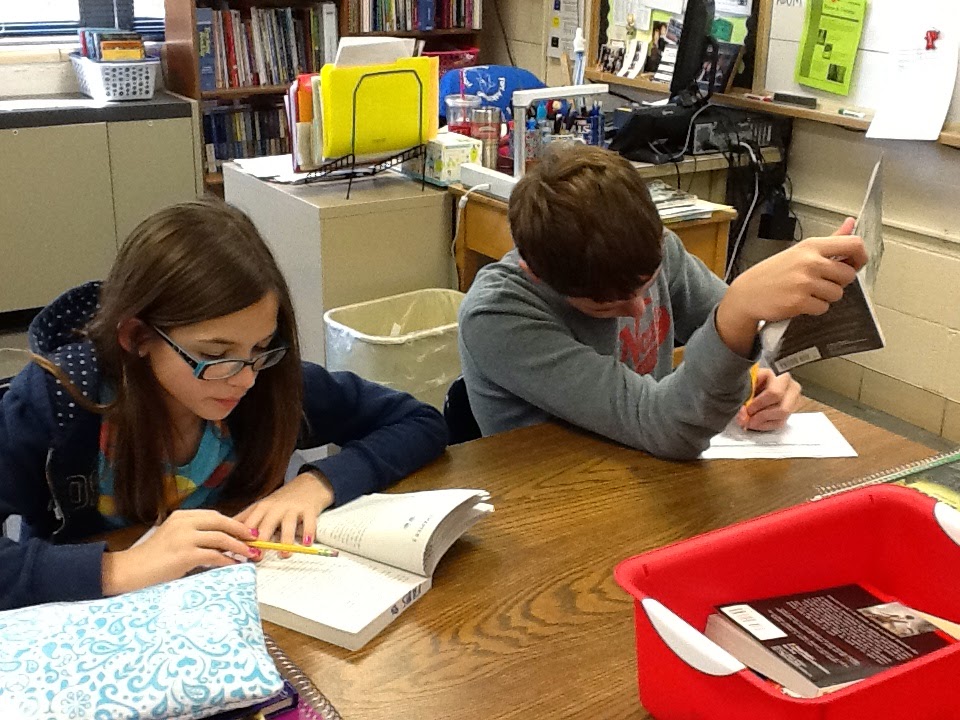
I picked 5-6 students to be my 'fish inside the fishbowl' who would discuss with one another the question I posed about the book we have been reading called Touching Spirit Bear. (I asked each group 3 total questions.) Students who were not in the fishbowl were observers of the fish discussion, although I selected 5-6 of the observers to formally observe one particular 'fish' to monitor that student's contributions to the discussion. These formal observers used the sheet you see below. Every student got to be a 'fish' and every student got to formally observe another 'fish' through the 4 rounds of questions.
Students who discussed sat in the middle and had a copy of Touching Spirit Bear to reference and support their thinking. Students on the outside observed the discussion. Careful listening was in order for all students as I eventually opened up the discussion to the whole class after the conversation in the fishbowl 'died off'. (P.S. - It was Favorite Sports Team Day today at school so some kids wore hats.)
Formal observers received this observation sheet to record the contributions of one particular fish.
Here you can see one of my students watching her 'fish' with her blue observation sheet in front of her. She carefully listened to his contributions and recorded what he said and his behaviors.
As I mentioned earlier, I opened up the discussion to the rest of the class after the students in the 'fishbowl' were done discussing. I was pleasantly surprised with how many students wanted to respond to things that were said 'inside the fishbowl'. Some of our discussions for one question lasted 10 minutes. It was focused, respectful, and meaningful discussion!
The activity started off very slow and awkward. These kids are great at chatting in the hallway and at lunch about the latest gossip and who likes who, but when it comes to purposeful discussion intended to help our brains grow - they struggle. With this activity, students picked up on the tone, the organization, and the focus of this discussion and really impressed me. They sounded like miniature adults! Many students asked when we could do it again. I will definitely keep this discussion activity in my bag of tricks. Tomorrow I plan to have students self-reflect on the process so students can recognize their strengths and areas to grow for next time.






























































